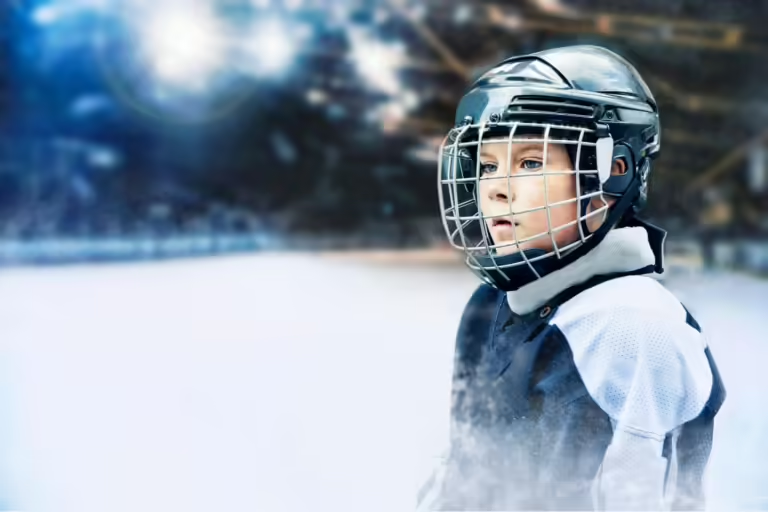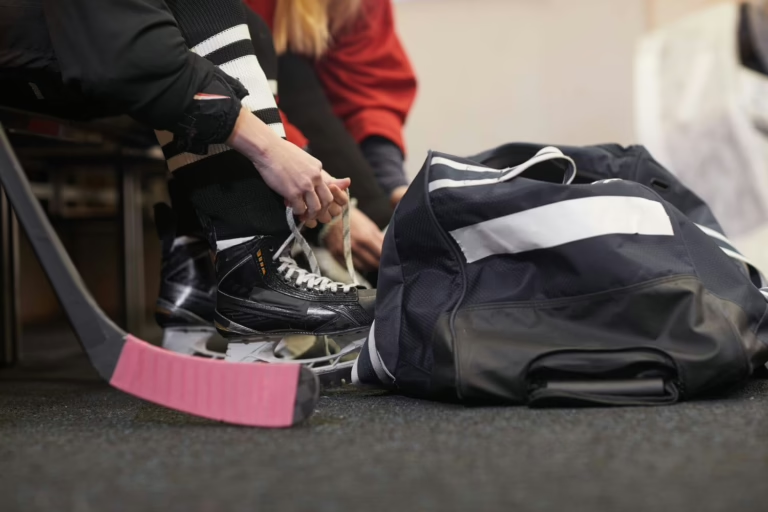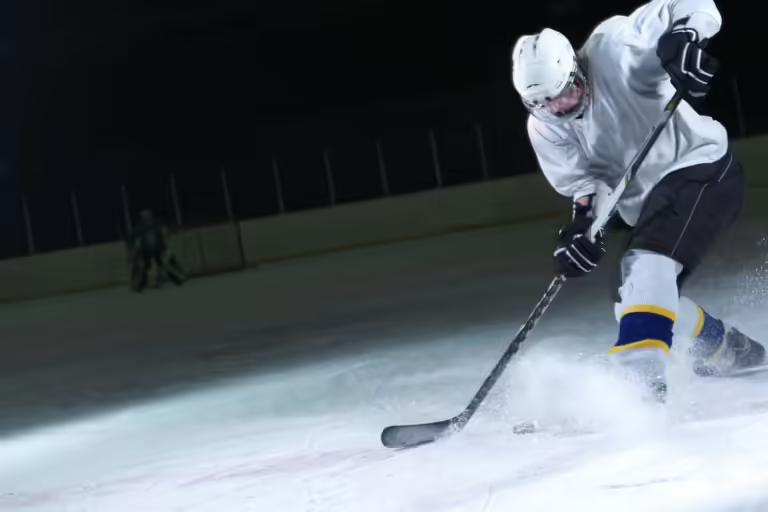All hockey players, from mites all the way up to the pros, have an ideal hockey stick length for their specific height and playing style. Many players have to cut their sticks down to size prior to using them to get to that ideal length.
But what is the ideal hockey stick length?
It depends on a few factors, all of which we’ll cover here in our comprehensive guide to hockey stick length.
Why Does Stick Length Matter?
Stick length is one of the four key variables of choosing the perfect hockey stick:
- Stick Length
- Stick Flex (check out our guide to choosing the right stick flex)
- Stick Curve
- Stick Kick Point
Each one of these variables affects the others, as well as your overall performance. By making sure all four variables are a perfect match for your height, weight and style of play, your stick will become an asset instead of a liability.
Sticks Should Be Chin Length On Skates
In general, when you’re on skates and you hold your stick in front of you vertically with it’s toe on the ice, the bud of the stick should be around your chin. If you’re off-ice and in shoes, this equates to the stick coming up to around your nose.
However, there are adjustments to consider from there based on your position and style of play.
Ideal Stick Length For Defense
Defencemen may be at an advantage if they play with a slightly longer than average stick, typically between their chin and their nose with skates on, or between your nose and your eyes with shoes on.
When you play with a longer stick, you have more range to poke check the puck away from opponents and you can take a harder slap shot – all things that defensemen are more likely to do than forwards.
The downside of having a longer stick is you lose a bit of finesse when it comes to stickhandling. Since defensemen are not necessarily expected to be deking by players regularly, having a longer stick is usually a good trade off for anyone playing defense.
Ideal Stick Length For Forwards
On the other hand, forwards may be at an advantage if they play with a slightly shorter than average stick, typically anywhere below the chin with skates on, or at the chin with shoes on. With this length, you can take a strong and powerful snap shot with good puck control.
The downsides here would be a slightly reduced slap shot and less range to poke check. Since forwards are not expected to do either of those things frequently, playing with a shorter stick is usually worthwhile.
How Stick Length Affects Stick Flex
For many people, a stick off the rack will not be the correct size. It will either need to be cut down to the ideal size or have a butt end added to increase the stick’s length to the ideal size. Both adjustments will change the flex of a stick and should be taken into consideration.
In general, every inch removed from the stick will add 3 flex points to the stick. Every inch added to a stick will remove 3 flex points to the stick.
Removing 1-2 inches from your hockey stick probably won’t be noticeable to your hockey performance, but if you buy a stick where you plan on adding or removing 3+ inches, you should probably purchase a higher or lower flex respectively to account for the flex change.
Getting Taller? Give Yourself Room To Grow.
When buying hockey sticks for a youth skater that’s still growing, it’s prudent to purchase a stick that they can grow into. Hockey sticks are expensive, so we want to get as much use out of them as possible!
For youth skaters, you may want to get a stick with a flex that’s on the stiff side. You will weigh more in the future and will need a stiffer stick to compensate. In addition, you may need to add a butt end to the stick to make it longer if you hit a growth spurt, which will make the stick more flexy.
How To Tell If Your Stick Is Too Long?
If you are having a hard time stickhandling the stick because you feel like the stick is getting in your way, your stick may be too long.
How To Tell If Your Stick Is Too Short?
If you feel like you’re bending at the waist and knees too much when you have the puck, your stick may be too short. Additionally, if you feel like you’re always missing poke checks, that’s another sign your stick may be too short. However some players – like Ovechkin – really thrive with a very short stick, so it may simply just take some practice and getting used to as well.
Use The Correct Stick Length & Watch Your Game Improve!
If you’re not playing with correctly sized equipment, it’s going to be very difficult to play your best. By following these general guidelines on stick length, you’ll be certain that your stick is not what’s holding you back. Now all you have to do is go practice those stickhandling skills!



